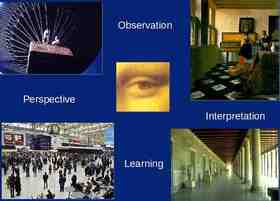PHOTOSYNTHESIS
38 Slides352.50 KB
PHOTOSYNTHESIS
Photosynthesis An anabolic, endergonic, carbon dioxide (CO2) requiring process that uses light energy (photons) and water (H2O) to produce organic macromolecules (glucose). SUN photons 6CO2 6H2O C6H12O6 6O2 glucose
Question: Where does photosynthesis take place?
Plants Autotrophs: self-producers. Location: 1. Leaves a. stoma b. mesophyll cells Mesophyll Cell Chloroplast Stoma
Stomata (stoma) Pores in a plant’s cuticle through which water and gases are exchanged between the plant and the atmosphere. Oxygen (O2) Carbon Dioxide (CO2) Guard Cell Guard Cell
Mesophyll Cell Nucleus Cell Wall Chloroplast Central Vacuole
Chloroplast Organelle where photosynthesis takes place. Stroma Outer Membrane Inner Membrane Thylakoid Granum
Thylakoid Thylakoid Membrane Granum Thylakoid Space
Question: Why are plants green?
Chlorophyll Molecules Located in the thylakoid membranes. membranes Chlorophyll have Mg in the center. Chlorophyll pigments harvest energy (photons) by absorbing certain wavelengths (blue-420 nm and red-660 nm are most important). Plants are green because the green wavelength is reflected, reflected not absorbed. absorbed
Wavelength of Light (nm) 400 500 600 700 Short wave Long wave (more energy) (less energy)
Absorption of Chlorophyll Absorption violet blue green yellow wavelength orange red
Question: During the fall, what causes the leaves to change colors?
Fall Colors In addition to the chlorophyll pigments, there are other pigments present. During the fall, the green chlorophyll pigments are greatly reduced revealing the other pigments. pigments Carotenoids are pigments that are either red or yellow. yellow
Redox Reaction The transfer of one or more electrons from one reactant to another. another Two types: 1. Oxidation 2. Reduction
Oxidation Reaction The loss of electrons from a substance. Or the gain of oxygen. oxygen Oxidation 6CO2 6H2O C6H12O6 6O2 glucose
Reduction Reaction The gain of electrons to a substance. Or the loss of oxygen. oxygen Reduction 6CO2 6H2O C6H12O6 6O2 glucose
Breakdown of Photosynthesis Two main parts (reactions). 1. Light Reaction or Light Dependent Reaction Produces energy from solar power (photons) in the form of ATP and NADPH. NADPH
Breakdown of Photosynthesis 2. Calvin Cycle or Light Independent Reaction or Carbon Fixation or C3 Fixation Uses energy (ATP and NADPH) from light rxn to make sugar (glucose).
1. Light Reaction (Electron Flow) Occurs in the Thylakoid membranes During the light reaction, reaction there are two possible routes for electron flow. flow A. Cyclic Electron Flow B. Noncyclic Electron Flow
A. Cyclic Electron Flow Occurs in the thylakoid membrane. membrane Uses Photosystem I only P700 reaction center- chlorophyll a Uses Electron Transport Chain (ETC) Generates ATP only ADP P ATP
A. Cyclic Electron Flow Primary Electron Acceptor SUN ee- ePhotons P700 Accessory Pigments Photosystem I e- ATP produced by ETC
B. Noncyclic Electron Flow Occurs in the thylakoid membrane Uses PS II and PS I P680 rxn center (PSII) - chlorophyll a P700 rxn center (PS I) - chlorophyll a Uses Electron Transport Chain (ETC) Generates O2, ATP and NADPH
B. Noncyclic Electron Flow Primary Electron Acceptor Primary Electron Acceptor SUN 2e- 2e- Photon H2O 1/2O2 2H Enzyme Reaction 2e- ETC 2e- 2e- P700 NADPH ATP P680 Photosystem II Photon Photosystem I
B. Noncyclic Electron Flow ADP P ATP NADP H (Reduced) NADPH (Reduced) Oxygen comes from the splitting of H2O, not CO2 H2O 1/2 O2 2H (Oxidized)
Chemiosmosis Powers ATP synthesis. synthesis Located in the thylakoid membranes. membranes Uses ETC and ATP synthase (enzyme) to make ATP. Photophosphorylation: addition of phosphate to ADP to make ATP. ATP
Chemiosmosis SUN H H Thylakoid E PS II (Proton Pumping) T PS I C high H H H concentration H H H H H ADP P H ATP Synthase ATP Thylakoid Space low H concentration
Calvin Cycle Carbon Fixation (light independent rxn). C3 plants (80% of plants on earth). Occurs in the stroma. Uses ATP and NADPH from light rxn. Uses CO2. To produce glucose: it takes 6 turns and uses 18 ATP and 12 NADPH.
Chloroplast Stroma Outer Membrane Inner Membrane Thylakoid Granum
Calvin Cycle (C3 fixation) (36C) 6C-C-C-C-C-C (6C) 6CO2 (unstable) (30C) 6C-C-C-C-C RuBP (30C) glucose 6C-C-C 12PGA (36C) 6ATP 6ATP 6NADPH 6NADPH 6C-C-C 6ATP C3 6C-C-C (36C) 6C-C-C 12G3P (6C) C-C-C-C-C-C Glucose
Calvin Cycle Remember: C3 Calvin Cycle C3 Glucose
Photorespiration Occurs on hot, dry, bright days. days Stomates close. Fixation of O2 instead of CO2. Produces 2-C molecules instead of 3-C sugar molecules. molecules Produces no sugar molecules or no ATP.
Photorespiration Because of photorespiration: photorespiration Plants have special adaptations to limit the effect of photorespiration. photorespiration 1. C4 plants 2. CAM plants
C4 Plants Hot, moist environments. environments 15% of plants (grasses, corn, sugarcane). Divides photosynthesis spatially. Light rxn - mesophyll cells. Calvin cycle - bundle sheath cells.
C4 Plants Malate C-C-C-C Malate C-C-C-C Transported CO2 CO2 C3 glucose C-C-C PEP ATP Mesophyll Cell C-C-C Pyruvic Acid Bundle Sheath Cell Vascular Tissue
CAM Plants Hot, dry environments. environments 5% of plants (cactus and ice plants). Stomates closed during day. Stomates open during the night. night Light rxn - occurs during the day. Calvin Cycle - occurs when CO2 is present.
CAM Plants Night (Stomates Open) Day (Stomates Closed) Vacuole CO2 C-C-C-C Malate C-C-C-C Malate C-C-C-C Malate CO2 C-C-C PEP ATP C-C-C Pyruvic acid C3 glucose
Question: Why would CAM plants close their stomates during the day?











































